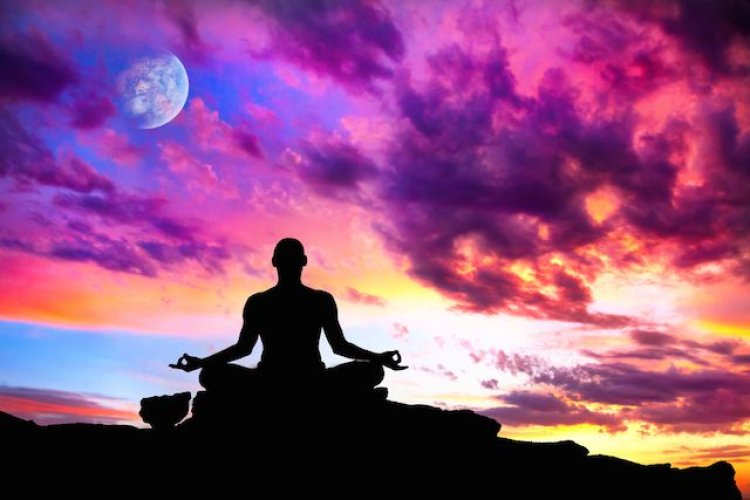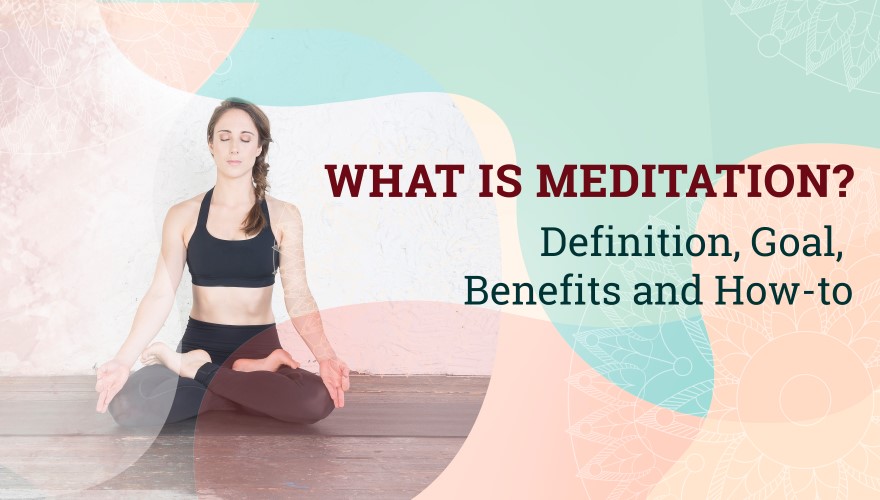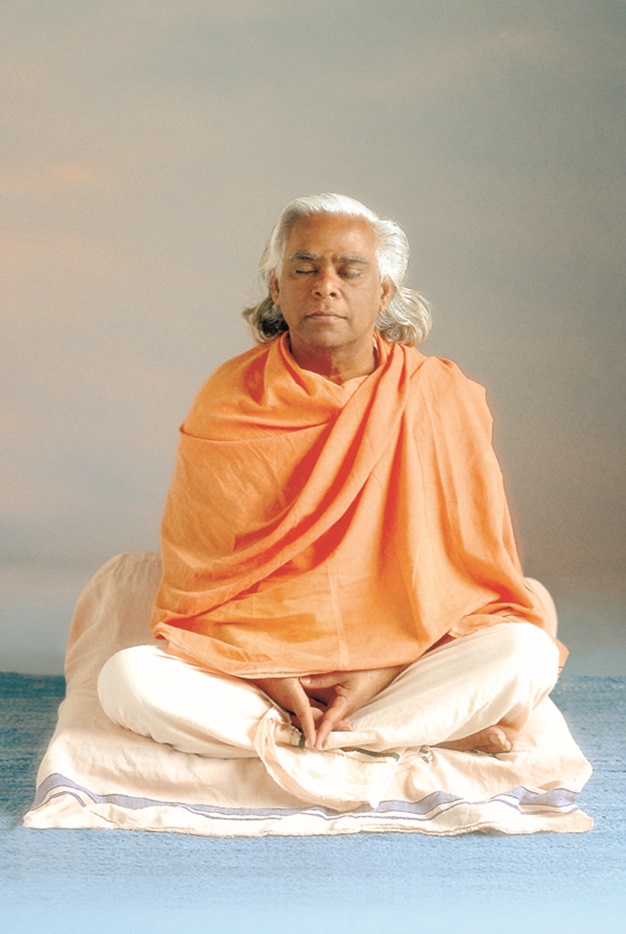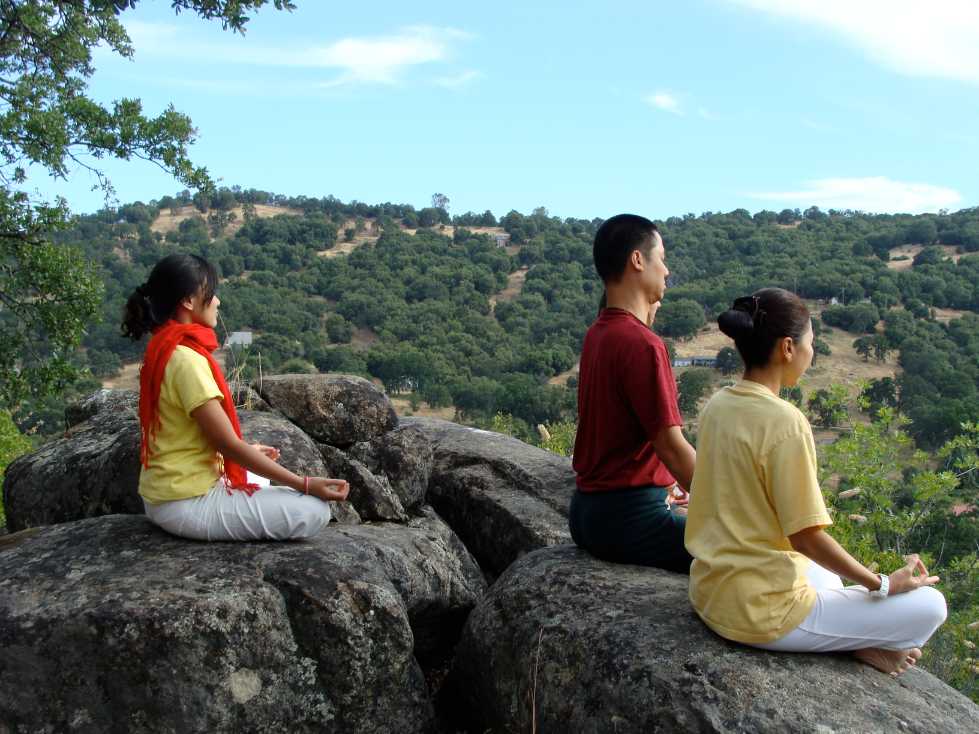What is Yoga Meditation?
I’m so surprised to know that more and more people are understanding that yoga is meditation and meditation is yoga.

It amazes me that more and more individuals are beginning to recognize the inherent unity between meditation and yoga. More individuals are learning that yoga has many benefits beyond physical health. Yoga asanas (postures) and other forms of physical activity are gateways to meditation because they are performed in tandem with deep breathing.
Relaxing while breathing consciously. Therefore, if you maintain a steady posture, focus your attention on your breathing, let your mind wander freely, and breathe deeply, you will enter a meditative state
What yoga meditation is and what it is not
Meditation is an ongoing practice that arises from the realization that there is a truth beyond what the intellect and our brain can conceive of. To begin meditating seriously, most people must first hit a wall in their pursuit of mental and sensual bliss and satisfaction.
Meditation is not something that happens in a vacuum. One should not anticipate instant results. It's the pinnacle of a good, pure life. It is best to enter meditation with an open mind and a stable disposition.
Meditation is often the result of an effort to quiet the mind and withdraw the senses. These are the fourth and fifth rungs of the Raja Yoga stairway. To meditate is the seventh If you are not yet able to meditate, at least try to sit quietly, pull back your senses, and focus your mind. We can already see how useful this is.
Asana and pranayama training are the third and fourth rungs of the meditative ladder, respectively. Breath control and steady meditation postures are powerful tools for easing mental tension.

Prana and mental focus are essential for successful meditation. Conserving prana for introspection is facilitated by adjusting one's way of living. How to Make the Most of Prana Energy is the topic of this in-depth article.
It's more challenging for a sick person with little prana to meditate and gather the mind's rays. It's helpful to find solace in prayer during that moment.
Japa, or the recitation of mantras, is a regular practice that prepares the mind for meditation. The mind receives prana, or pure transcendental energy, via chanting mantras.
The fruits of successful meditation are not extraordinary psychic occurrences but rather mental fortitude and tranquillity in everyday life.
The realization is crucial: Devotion to the Supreme, in whatever shape or name, and the conviction that there is Truth or Light beyond one's darkness or uncertainty might result from meditation, albeit this is dependent on the guna and the individual. Assist the meditator in forming a deep and fulfilling bond with divine love. Bhakti Yoga is useful for balancing the meditator's mental concentration and will by channeling emotional energy and bringing acceptance, humility, and an attitude of self surrender. Meditation is not merely a skill to be practiced without emotion.
Also To meditate is not to read minds, levitate, astral project, pass through solid objects, or experience otherworldly phenomena. Meditation's sole purpose is to bring about inner calm and equilibrium.
One's mind is not wide open to all subtle stimuli while meditating.
Meditation is neither daydreaming or creating imaginary worlds in your head.
Expectations of any type have no place in meditation.
"Spacing out" and ignoring obligations is not what meditation is about. The Yogic Code of Conduct is explored in depth here.
When you meditate, you're not supposed to shut off the world and retreat inside your own head. This is a crucial consideration, as many individuals turn to meditation as a means of numbing the discomfort of living in a world of duality and imperfection, without genuinely working to restore mental equilibrium and purity. That's why it's important to combine meditation with acts of service, self-forgiveness, and compassion for others. Karma yoga facilitates the practice of meditation.
One does not have to give up one's rationality in order to meditate. It's utilizing your brain on purpose so you can tell fact from fiction, and then expanding your mind beyond logic to access your intuitive knowing.
Worries and expectations have no place in meditation. It takes bravery and trust to explore mental frontiers you've never been to before. Conquering Fear by Leaping Into the Unknown is the topic of this article.
To meditate well, one must have a robust mental constitution. Nobody should try to meditate if they have a troubled, neurotic, or anxious mind. To combat the mind's negative tendencies, it's best to first try more gentle practices like asanas and pranayama, as well as therapeutic therapy. Sitting quietly and trying to relax the mind on a regular basis is already beneficial.
One of the first steps in learning to meditate is developing the practice of introspectively questioning and watching one's own mental processes on a regular basis.

To meditate successfully, one must make an effort to quiet the mind. Realizing and separating oneself from the mind's activities is a significant first step in meditation. Even small victories every day can help you take charge of your subconscious and train your conscious mind.
Meditation, the next stage of which is to dissolve into the background, the consciousness inside, requires a solid foundation of self-awareness. Purifying one's thoughts (by learning to think properly or by nourishing sattvic thoughts and a sattvic diet) and reducing one's mental activity (by increasing concentration on the divine) are the first steps toward developing self-awareness. The concepts of self-awareness and intuition are discussed.
The Self is ever there; it is only the waves of thought that obscure it.
Meditation techniques protocol
The methods of meditation are straightforward. The instructions should be easy to understand. Avoid using a lot of jargon and leading the reader on a wild goose chase.Meditation for 10 to 15 minutes a day is a wonderful place to start. Raise the timeLocation: spotless, serene, and open.Time: very early (between 4 and 6 am) or late (6 to 8 pm) or right as you get up in the morning.Ideally, you would be sitting cross-legged and straight up and down. Raise buttocks on pillows or other supports to avoid bending at the waist. Those who are uncomfortable sitting cross-legged on the floor can do it in a chair by placing one or both feet flat on the floor. The "chin mudra" position involves placing one's hands on one's knees with the thumb and index finger touching, the palms facing either up or down, and the arms either slightly bent or completely straight. It's not a good idea to lean against a wall or the back of a chair. Take a seat on your own. In a state of blindness. Tell your body to chill out and focus within for a set amount of time.There are three distinct types of breath. Take three deep breaths in to replenish your brain's oxygen supply, then three deep breaths out to let go of the day. More tension means a lengthier pause between breaths. Next, count three deep breaths in and out (om 1, om 2, om 3). Equal time is spent inhaling and exhaling. The balancing of prana and mind will be aided by this. Then, as you continue to sit quietly, your breathing will naturally decrease to an undetectable rate, at which point your breath will barely escape through your nostrils and you will feel extremely at ease. When the mind enters this meditative state, it withdraws from the world outside.Target either the space between your brows or the center of your chest as your focal point. Concentrations of faint but powerful energy. Focus can be found through paying attention to one's routines. Both routes result in the same destination. Prana will flow into the Sushumna when attention is directed there, and energy will rise through the stages of awareness and understanding. It's not getting stuck in a limbo between feeling emotional and thinking logically. No energy is wasted on the lower chakras.
 Topic of attention: Om, the sound of the mantra, symbolizes both harmony and creativity. Anyone is free to use it. If a pupil wants to employ a personal mantra, the teacher must first help him or her identify the ishta devata to which the mantra should be addressed. Mantra meditation is the disciplined practice of maintaining a focused mind through the repetition of a sacred sound. The devotion aids in focus. Mantra recitation requires synchronization with the breath. Incorporate the mantra into your breathing. Repetition in one's mind is more powerful than repetition in one's voice.When your thoughts wander, mentally disengage from them and return your attention back to the breath and the chant. When in doubt, concentrate on the chant rather than the breath. The mind eventually calms down and goes inward, exploring the depths of oneself. One's sense of lightness and spaceiness increases. At any time, rather than trying to control the process, give up to it.When the mind becomes thinner and one's ego weakens, one's thoughts become more pristine and seemingly meaningless. Do not attach any meaning to the procedure at this point.After the allotted time has passed, you must end your meditation. Don't push yourself too far, otherwise your mind may rebel and retaliate. It's preferable to finish the session on a positive note so that the following time you may dive in with renewed vigor and passion. Keep up your everyday efforts to cleanse your thoughts. When one's thoughts are clear, meditation becomes simpler and more effective.The meditator, the meditative object, and the meditative process are all described as merging into one another. There is no separation between the thinker, the notion, and the act of thinking itself. All three—lover, loved one, and love—merge into one.A meditator leading a group must have personal experience with meditative integration before leading others. It's important to use a kind, neutral tone of speech that's easy to understand so that the internalization trip may begin. Prana is communicated through the voice. Less is more, and so is precision.
Topic of attention: Om, the sound of the mantra, symbolizes both harmony and creativity. Anyone is free to use it. If a pupil wants to employ a personal mantra, the teacher must first help him or her identify the ishta devata to which the mantra should be addressed. Mantra meditation is the disciplined practice of maintaining a focused mind through the repetition of a sacred sound. The devotion aids in focus. Mantra recitation requires synchronization with the breath. Incorporate the mantra into your breathing. Repetition in one's mind is more powerful than repetition in one's voice.When your thoughts wander, mentally disengage from them and return your attention back to the breath and the chant. When in doubt, concentrate on the chant rather than the breath. The mind eventually calms down and goes inward, exploring the depths of oneself. One's sense of lightness and spaceiness increases. At any time, rather than trying to control the process, give up to it.When the mind becomes thinner and one's ego weakens, one's thoughts become more pristine and seemingly meaningless. Do not attach any meaning to the procedure at this point.After the allotted time has passed, you must end your meditation. Don't push yourself too far, otherwise your mind may rebel and retaliate. It's preferable to finish the session on a positive note so that the following time you may dive in with renewed vigor and passion. Keep up your everyday efforts to cleanse your thoughts. When one's thoughts are clear, meditation becomes simpler and more effective.The meditator, the meditative object, and the meditative process are all described as merging into one another. There is no separation between the thinker, the notion, and the act of thinking itself. All three—lover, loved one, and love—merge into one.A meditator leading a group must have personal experience with meditative integration before leading others. It's important to use a kind, neutral tone of speech that's easy to understand so that the internalization trip may begin. Prana is communicated through the voice. Less is more, and so is precision.
Benefits of yoga meditation

In order to encourage new meditators and those who have fallen out of practice to return, it is useful to review the advantages of meditation. It's wise to take things gently at first, as consistency in practice is more crucial. The more mental clutter is cleared away and the more tranquil you become, the longer you should meditate. Keep an eye on what you eat and how you spend your time. The key is to cultivate more Sattwa.
Being more present in the moment is one benefit of meditating.
Through regular practice, meditation can lighten the strain of past experiences, samskaras, addictions, and habits on the subconscious mind.
The practice of meditation has been shown to increase both awareness and IQ.
By practicing meditation, one can sharpen their intuitive abilities, or their innate sense of right and evil.
The mind becomes more focused through meditation.
Meditation soothes the mind and makes one more receptive to feelings of compassion and love. Meditating together helps mend wounds. During meditation, one becomes one with a divine love that provides safety and fulfillment.
Meditation helps one get in touch with their true, perfect, and secure Self, the consciousness within, allowing them to let go of worries and feel a renewed sense of hope, love, and faith.
In addition to calming the heart and mind, meditation also strengthens the immune system.
Relaxing with meditation
Questions on Yoga meditation
- Describe the techniques of meditation.
- What should be prescribed if a person can not meditate or sit still?
- How can you distinguish between escaping from reality, and clearing out the mind from past samskaras and realizing the Self? What can you do to improve the process and achieve balance?
- What are three things achieved during meditation?
- Why is courage an important virtue in meditation?












